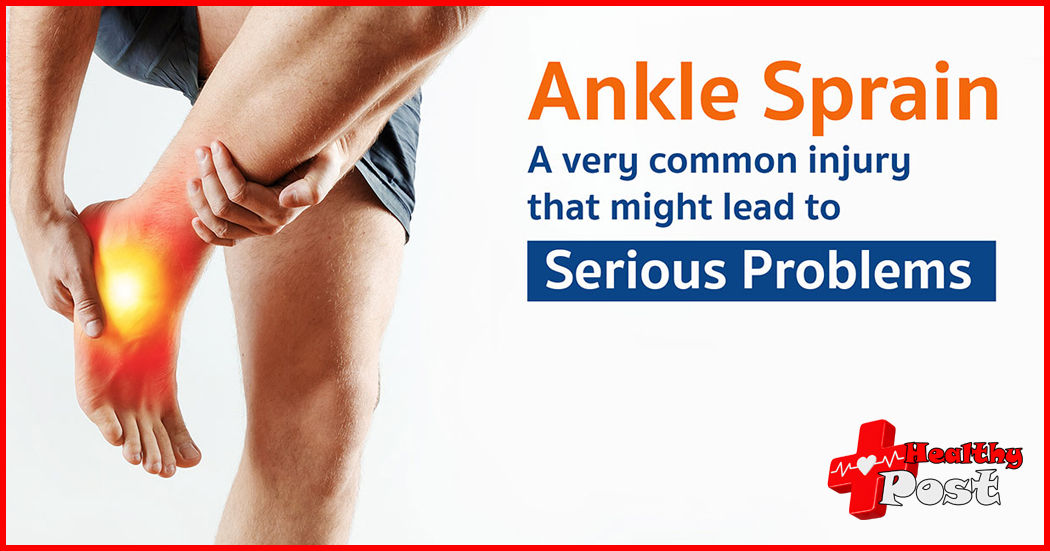
What should I do if I have a sprain foot or sprain my ankle ligament
In life, there are always some surprises. Ankle sprain is more common in these, especially for women who like to wear high heels or like to play ball. If you are not careful, ankle sprains can easily occur. After an ankle sprain, we will find a problem, that is, the recovery is so slow. Even after spraining once, the back is often sprained, which makes the patient afraid to wear high heels to walk on uneven roads, or even unable to see the road clearly in the dark. Walk carefully.
Recovery time from an ankle ligament injury depends on the extent of the injury. The most common injury to ankle ligaments is ankle sprain, which is the most common trauma in daily life, especially lateral ligament sprain, but this injury is rarely taken seriously. Severe injuries can lead to ruptured ligaments and fractures and avulsions. If not treated properly, it can leave the joint unstable and prone to repeated sprains. Over time, adhesions or traumatic arthritis can develop and lead to functional impairment, so their treatment should be as important as fractures.

How to Treat Ankle Ligament Strain
1. Strain is an injury caused by rapid muscle contraction or excessive stretching during exercise. Muscle strains are common during exercises such as pull-ups and sit-ups. When a muscle is strained, perform cold treatment immediately – rinse the area with cold water or apply ice with a towel, and then wrap the injured area with a bandage to prevent swelling. 3. Strain will cause severe pain in the injured area. You can touch the cord-like mass formed by muscle tension with your hands, which will cause obvious pain, local swelling or subcutaneous bleeding, and significantly restrict activities. Bandages or other methods can be used to compress the injured area to reduce bleeding and congestion.
2. Precautions for ankle ligament strain: It is very important to correctly handle ankle ligament strain in the early stage. After ankle ligament injury, local swelling, pain, tenderness, and blue areas with subcutaneous bleeding can be seen. Because ligament tissue is not easy to regenerate and recover, if it is not treated properly or misdiagnosed, it will evolve into a chronic disease, which may leave functional impairment and make it easy to sprain again in the future.
How to avoid ankle ligament strain

1. First move the joints of the head, hands, waist and legs, and then jog for 15 minutes. (Ligaments are more likely to loosen after jogging)
2. Pull the ligament: Carry out in several steps. Ankle first, sit down, place your left foot on the knee of your right leg, and hold your left ankle for two eights. Then, maintain the posture, press down on the knee with one hand, and beat two eight beats back and forth. Then maintain the posture, put your left leg down, and then press your right leg, trying to keep your belly as close to your leg as possible. Eight beats and four beats. Also change feet. Then there are the legs. Extend your legs horizontally and press your body downward. The requirements are the same as above.
3. Fork: Go as deep as you can, preferably close to the ground. The back feet are required to be on the ground and the upper body is upright. (Legs) Four, it is a cross. When your feet land on the ground, your feet should be hooked up. Other requirements are the same as above.
4. Back: With your knees and feet on the ground, lie flat with your back facing the ground at the highest level. Be careful not to tilt your knees.
Ankle ligament strains are different from other sprains and strains. If not treated well, it can become permanent damage. So be prepared to warm up in advance, don’t be impatient, and the most important thing is to maintain a good attitude!
How long does it take to recover from an ankle ligament sprain?

As the old saying goes, a hundred days will damage your muscles and bones. In fact, to be honest, this does apply to many people, because most fractures take 3 months to recover. But there are many types of fractures, which vary from person to person. Therefore, it is necessary to analyze the specific situation of how long it takes for an ankle fracture to return to normal walking, but generally 3 months is a conservative period.
For patients whose ankle fractures are not significantly displaced, conservative treatment may be considered at this time. If the ankle fracture displacement is not obvious at this time, you can try plaster immobilization or brace immobilization at this time. Generally speaking, patients try to avoid walking on the ground or walking with weights for a month. When you have to walk with weight on the ground, it is best to choose the other foot and use both hands to support the crutch.
Exercises in bed
During this month, patients can try exercises in bed to strengthen the muscle strength of their lower limbs. After the cast is removed, they should begin trying ankle flexion and extension exercises. For those patients who want to walk with weight bearing, it is generally recommended to try again after three months. At the same time, it is necessary to ensure that the healing of the body’s fractures is in good condition so that full weight-bearing is possible.
Ligament injuries are divided into three grades based on the degree of tear. At one point only a tear stain could be found under the microscope. The pain was minimal and there was almost no swelling. Just rest for a few days. The second degree is a partial tear of the ligament, and the ankle joint is obviously swollen and painful. Cold compress is applied within 72 hours after the injury, and then immobilized with a plaster. It usually heals in about 20 days to a month. The most serious is a third-degree tear, which is a complete rupture of the ligament. The patient’s ankle will have large ecchymoses and severe swelling and pain. Without proper treatment, although you can walk in about a month, the pain and dysfunction left behind will last for a long time and will gradually worsen, seriously affecting your normal life.
How to relieve ankle sprain pain

1. After resting, stop exercising immediately and do not let the injured joint bear any more weight.
2. Swelling and congestion will occur at the injured area. Ice or other cold compresses can help reduce pain and swelling, as lowering the temperature can reduce blood circulation. Apply cold compress for 15-20 minutes, 3-4 times a day.
3. Compression can be used for ankle ligament strains. Applying bandages or other methods to compress the injured area can reduce bleeding and congestion. The bandage should be tight enough that pressure can be felt without causing numbness or ischemia at the end of your branch.
4. The main purpose of raising the affected limb is to reduce swelling and promote blood return. As for ligament strain sports, due to external forces, joint activities exceed the normal physiological range, resulting in strain, partial or complete rupture of the ligaments around the joint, which is called joint ligament sprain. The most easily sprained joints and ligaments are the knee joint, finger joint, and ankle joint.
What to do if you have habitual sprained feet
An ankle sprain (ankle sprain) is the result of damage to one or more ligaments within the ankle joint, usually on the outside of the ankle joint. Ligaments are flexible, fibrous elastic connective tissues that connect bones to bones like rubber bands. Ankle ligaments limit lateral movement and provide stability to the ankle joint. The severity of an ankle sprain depends on whether the ligaments are strain, partially torn, or completely torn, and also depends on the number of injure ligaments. The difference between an ankle sprain and a muscle (strain) is that the latter affects the muscles more than the ligaments.
Ankle sprains are usually cause by a sudden sprain or a fall, causing the ankle joint to deviate from its normal position. It usually occurs when engaging in sports activities, wearing inappropriate shoes, or walking or running on uneven surfaces. Generally speaking, 95% of ankle sprains occur in the lateral ligaments. There are usually two outcomes after an ankle sprain.
The ankle joint becomes fibrotic and stiff, but the movements remain toned. The result of pinching is pain on the front and front sides of the ankle. The ligaments around the ankle joint become loose and weak, proprioception is damage. And the ankle joint becomes unstable. One study showed that 40% of ankle injuries result in soft feet and habitual injuries.
Tips to prevent ankle sprains
Warm up before exercise and stretch afterward. Wear appropriate shoes that provide good foot support. Stop exercising if you feel pain in your ankle. You need to be especially careful when walking and running on uneven surfaces or doing activities that require jumping. Adhesive technology improves ankle stability.


3 thoughts on “What should I do if I have a sprain foot or sprain my ankle ligament”